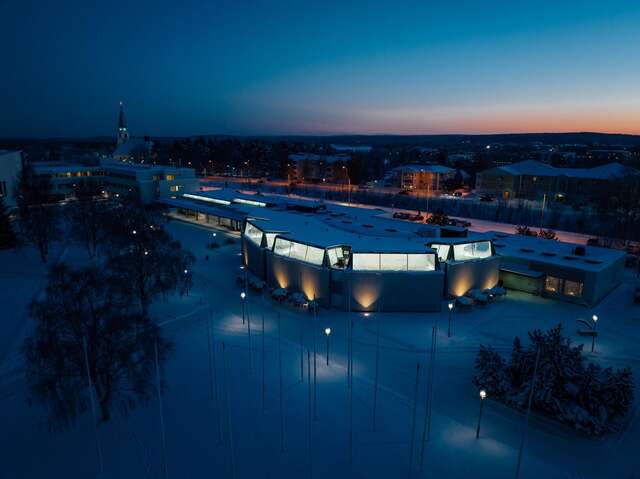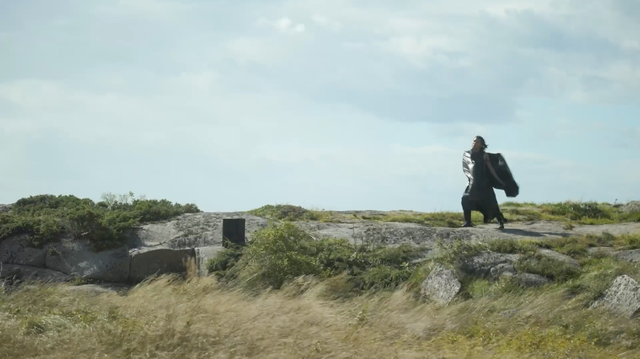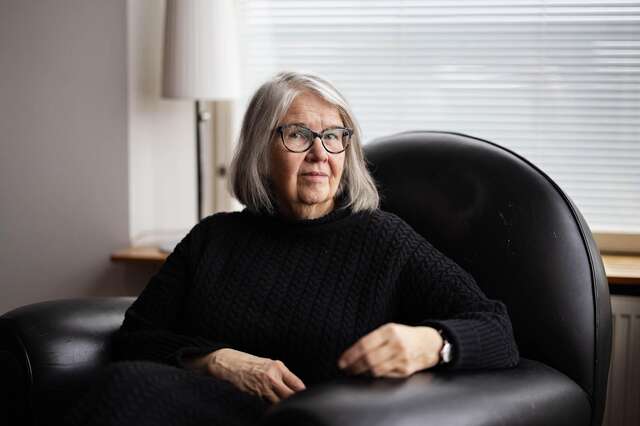Together towards Quality of Living
The main discussion of the 2023 Finnish Architecture and Design Days, themed ‘Quality of Living’, challenged three design professionals to reflect on their work from important perspectives and highlighted the need for a common language among designers.
The representatives of architecture, interior architecture and landscape architecture see common practices and multidisciplinary approaches as the basis for the sustainability and functionality of the design disciplines. The main discussion on the quality of living at ArcDesign challenged them on creating an environment that is both socially and ecologically sustainable and accessible. How can designers of environments, homes or buildings create quality of life?
Creating multidisciplinary quality
The first challenge for the panel came from the PehmoGIS research group at Aalto University. The panellists were asked to consider whether design can improve the well-being of both the planet and people without excluding one or the other. "Not only it can, it has to," said architect Aleksi Niemeläinen, who works in interior design. Architect Selina Anttinen also believes in the potential of the sectors to lead the way: "As designers, we have a responsibility to show how to make the right choices."
Anttinen also advocates cross-disciplinary approaches that combine nature and the urban environment. A vibrant, healthy environment inevitably reflects on the quality of people's lives: "There is no contradiction between the well-being of the planet and the well-being of people: if the planet is doing well, so are people," says landscape architect Varpu Mikola.
Every planning process requires careful prioritisation, says Niemeläinen: "Good planning is a continuous process of evaluation." The most challenging part, however, is finding a common language and scale among designers to support the work. The need for clear and concrete statistical and measurement methods is pressing. Shared and user-friendly statistical tools facilitate communication both between designers and with the client.
"There is no contradiction between the well-being of the planet and the well-being of people: if the planet is doing good, so are people."
The number of statistics that can be measured in concrete terms is limited: many aspects that are more difficult to observe, such as happiness, quality and diversity, are excluded, Mikola points out. However, the trio believes that social well-being can also be influenced by design, for example by favouring adaptive floor plans in housing or creating outdoor spaces that allow for encounters.
But quality must be demanded on both sides, says Anttinen, referring to the importance and responsibility of the client. "Construction projects are ultimately measured in euros, so solutions must be thought through in such a way that they are easy for the client to accept," continues Niemeläinen. Designers must seek to influence public opinion so that the objectives are reflected in both directions. Information must be shared more systematically on both sides.
Empathetic approaches
The panellists were also challenged by Kynnys ry, a human rights organisation for people with disabilities – what can designers do better to ensure that the right to a quality environment is realised for all? Existing legislation obliges designers to take accessibility into account, but barriers, especially in existing environments, are difficult to overcome, even from a design perspective.
Anttinen, Niemeläinen and Mikola note that the guidelines for implementing accessibility are comprehensive, but in all projects, accessibility must be taken as one of the starting points for the design. In this way, it is not a feature that is just glued on, but a characteristic of the design. The public debate has sometimes focused on whether there are too many requirements, but as Niemeläinen points out, the number of regulations seems excessive until they are relevant to one's own life and mobility.
"Great design is a continuous process of evaluation."
The range of groups to be considered in design work is huge, and not all are yet automatically taken into account. Mikola says that it is not possible to create an environment that is equally pleasant for everyone: "You just have to have different options." Public environments need to suit as many people as possible, while at the housing level, people need to be given the opportunity to personalise their home, says Anttinen.
The key to solutions that serve as many people as possible could lie in the increasing involvement of future users, something that not every project has had the time or resources to do. Schedules should not be so busy that there is no time to listen to users, says Niemeläinen. Anttinen also calls for more discussion with the people concerned, rather than just consulting accessibility experts. There is still work to be done and citizens should remember to keep up the dialogue, says Anttinen.
Up close to nature
The third challenge, posed by Sitra, turned the planners' discussion towards the resilience of nature and the opportunities for urban residents to enjoy nature. Mikola points out that legislation needs to be more binding at a higher level so that the ecological impact of construction, the carrying capacity of nature and the circular economy can be carefully integrated into every project.
Urbanisation is traditionally perceived as the opposite of nature, Niemeläinen says. "This is a bad starting point for design. We need a common will to find new solutions for enjoying nature." Nature should be accessible and present for urban residents, which will also increase biodiversity. Conflicting objectives should be placed in the right hierarchy, which in turn requires monitoring and information sharing from all sectors, says Anttinen.
"The arc of knowledge and expertise must be utilised collectively."
Faced with important and difficult goals, a question arises: is a designer allowed to fail? Ineffective solutions can also result from good intentions. "The built environment has a long life cycle, so the risk of failure must be low," says Anttinen, who wonders what the measure of failure in fact is. "The interior architecture sector gets away easier here because of the understandably shorter life cycle of the projects," Niemeläinen points out. "But even in interior architecture, the renewal of unnecessarily short cycles should be stopped and the aim should be to achieve the longest possible life cycle."
Self-reflection plays an important role: mentally, there must also be the possibility of failure, but a designer must be able to evaluate their own work and learn from both success and failure. "The arc of knowledge and expertise must be utilised collectively," Anttinen sums up.
In short, designers are looking for a common language: shared measures, multidisciplinarity and exchange of information. Sustainable planning that takes account of different needs and aspirations also needs to be supported by a meaningful public debate. A quality living environment is the result of collective action.
The Finnish Architecture and Design Days were celebrated all over Finland during the first week of February. The festival culminated in a flag-flying day on 3 February, when the main discussion on the quality of living was also held at Helsinki City Hall.
ArcDesign brought together representatives of three design disciplines: Selina Anttinen for architecture, Aleksi Niemeläinen for interior architecture and Varpu Mikola for landscape architecture. The discussion was moderated by Aino-Mari Tuuri.


